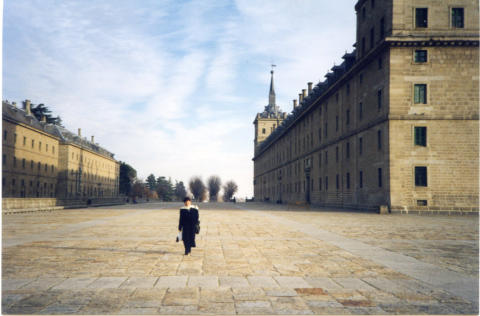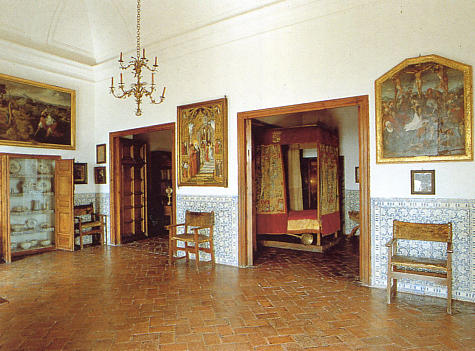- approximately 10% of the population too poor to afford insurance (and not granted it by their work), and too rich to be on Medicaid
- some insurers kept up to 54% of premiums, with huge incentives to refuse payment
- maximum lifetime benefits, amounting to 10-15 years of treatment for something like hemophilia
- refusal to cover 'pre-existing conditions', which could include anything from pregnancy to cancer risks
Thursday, April 28, 2022
EMAIL FROM AMERICA (9): US medical price-gouging - you really want this for the NHS?
Wednesday, April 27, 2022
How volcanoes ended almost all life on Earth
 |
| 'Permian-Triassic Boundary, notorious for being the most devastating extinction event in the planet's history (95% of life wiped out in a geological blink). It is located at Austinmer, a coastal suburb between Sydney & Wollongong, Australia.' Source |
 |
| https://cdn.mos.cms.futurecdn.net/RYzEqrgfyQPNGyeX7Wrh7f.jpg |
Tuesday, April 26, 2022
EMAIL FROM AMERICA (8): Gerrymandering to get the Right result
 |
| https://news.yahoo.com/congressional-maps-split-akron-summit-100050951.html '...Under the House proposal, Akron would be divided into two districts with one stretching into Portage, Ashtabula and Trumbull counties, while another extends into several Appalachian counties south of the city. Both districts would favor Republicans...' |
Monday, April 25, 2022
EMAIL FROM AMERICA (7): GOP wannabe Presidential nominees in crazy-policy bidding war
Sunday, April 24, 2022
SUNDAY SUPPLEMENT: Madrid's El Escorial, by JD
A few brief impressions after visit to El Palacio de El Escorial (on a day in winter, hence the lack of 'real' tourists):
El Escorial is the palace built by Philip II of Spain and is situated about an hour's train ride to the north-west of Madrid and one winter's day we decided to go and do the 'touristy' thing and look around but this is not a tourist guide to the building, it is more of an impression of what we found there.
If you want the history etc then full details are here (in Spanish)
http://es.wikipedia.org/wiki/Monasterio_de_San_Lorenzo_de_El_Escorial
and here (in English)
http://en.wikipedia.org/wiki/El_Escorial
The palace itself is huge and very impressive in every way; here you can see the scale of it:
First thing you see inside is a small display of architectural artefacts including some of the original drawings as well as a scale model of the wooden cranes used in the construction. It is easy to forget that before the industrial revolution everything had to be done by hand and lifting heavy stone blocks required a combination of hard labour and ingenuity.
The royal apartments are surprisingly small. The King's bedchamber is centrally placed within the building and very cleverly designed; from his bed he could see the surrounding countryside through two balconied windows and looking the other way he could see through his private chapel to the Basilica's high altar.
and, in my view, is much more impressive than the other frescos elsewhere in the building.
The Pinacoteca (art gallery) is divided into four rooms and displays works from the 15th, 16th and 17th century including this wonderful masterpiece by Rogier van der Weyden:
 |
| http://www.artbible.info/art/large/658.html |
When I saw this painting I almost fell over because of the disorienting use of colour - red, which is a colour that comes forward, is used as a background and the two foreground figures (and two others on separate panels at the sides of the main picture) are bluish grey which is a receding, background colour. It appears as though there are four statues standing in front of the painting. The effect is startling and is not seen to quite the same effect in reproduction. You need to go and see it for yourself but don't blame me if you fall over; you have been warned!
Down in the Pantheon are the tombs of Spanish kings and various notable figures of Spain's history including the famous Don Juan (http://en.wikipedia.org/wiki/John_of_Austria) - the most handsome man in the world (so I am told!)
Part of the building is still used as a school and you have to admit that is one magnificent playground!
Shortly after this picture was taken an elderly tourist decided to join in, just to show these small boys how.... and with a muttered 'Dios mio' my compañera headed for the chapel to beg forgiveness for my foolish ways.
and only 6½ leagues and 1191 yards back to Madrid:
The return journey was my first and (so far) only ride on a double-decker train. Why don't we have things like that in this country?
Saturday, April 23, 2022
WEEKENDER: The Week That Was, by Wiggia
From someone who gives the impression he is sneering at people most of the time, his recent speeches invoking the royal 'we' at every moment and his James Bond power play show he is rightly worried about winning a second term. He will win as France will either vote in ever smaller numbers and all the other parties will band together as usual to stop Le Pen getting into the Elysée and France will then moan about Macron for another five years; seems to be the pattern everywhere.
Priti Patel suffers like Macron from a height disadvantage. Her appearance on the rostrum in Rwanda was not helped in this area by her Rwandan official who appeared to be about 6’ 8” and the fact that next to him she looked like the second uncovering of a Russian doll.
 |
| (From 2016 but illustrative of how Woke has come to the Army) |
At the same time that 'Sleepy Joe' further confirms his total unsuitability for the job in hand, his understudy makes a play for the top job and fails, as she has done since day one…
It goes without saying that a lifestyle of luxury demands a suitable toast at the table and what is better than a suitably labelled Pinot Noir to set the tone?
 |
| Letting your wine breathe takes on a whole new meaning! |
On a local level we had a copy of the town council news letter arriving last week; one item caught the eye amongst the exciting news that another bus shelter had been refurbished. What was interesting about this proposal was what it didn’t say, i.e. what they were wanting to achieve in creating mayhem by closing a short connecting piece of road that runs past the school with two barriers manned by volunteers? No alternative routes, and I mean none are available, so that presumably the school run mummies can drop the little darlings off and pick them up without illegally parking everywhere as they do now or blocking private driveways on the nearest housing estate. If this is the object of the exercise it will cause chaos for the earlier reason and there are not enough parking spaces at the council offices currently used anyway so illegal parking will continue.
And lastly the Queen has had to suffer a surprise visit by the Kardashians complete with Netflix crew. Aa place on the balcony for the Jubilee celebrations is Harry’s hoped-for reward for this furthering his celebrity status as a, er, I have no idea. He also managed to use a well known Charles-ism, if that is a word, by describing the 95-year-old monarch as having ‘great form’ as if she was race horse; the Queen has always loved horses but has yet to identify as one; with what has gone on in the Royal Family in the last few years it would be better if the Queen appeared on the balcony alone or with a horse, she really doesn’t need the dysfunctional siblings anywhere near her.
Friday, April 22, 2022
FRIDAY MUSIC: Béla Bartók, by JD
It is good to get away from the famous names to explore the lesser known names of classical music. Even better when they draw on traditional folk melodies of their homeland so here is a selection from the Hungarian Béla Bartók.
Béla Bartók was born in the Hungarian town of Nagyszentmiklós (now Sînnicolau Mare in Romania) on 25 March 1881, and received his first instruction in music from his mother, a very capable pianist; his father, the headmaster of a local school, was also musical.
Bartók’s earliest compositions offer a blend of late Romanticism and nationalist elements, formed under the influences of Wagner, Brahms, Liszt and Strauss, and resulting in works such as Kossuth, an expansive symphonic poem written when he was 23.
Around 1905 his friend and fellow-composer Zoltán Kodály directed his attention to Hungarian folk music and, coupled with his discovery of the music of Debussy, Bartók’s musical language changed dramatically: it acquired greater focus and purpose. But as he absorbed more and more of the spirit of Hungarian folk songs and dances, his own music grew tighter, more concentrated, chromatic and dissonant – and although a sense of key is sometimes lost in individual passages, Bartók never espoused atonality as a compositional technique.
His interest in folk music was not merely passive: Bartók was an assiduous ethnomusicologist, his first systematic collecting trips in Hungary being undertaken with Kodály, and in 1906 they published a volume of the songs they had collected. Thereafter Bartók’s involvement grew deeper and his scope wider, encompassing a number of ethnic traditions both near at hand and further afield: Transylvanian, Romanian, North African and others. Bartók died from polycythemia (a form of leukemia) on 26 September 1945 in New York.
https://www.boosey.com/pages/cr/composer/composer_main?composerid=2694&ttype=BIOGRAPHY



















